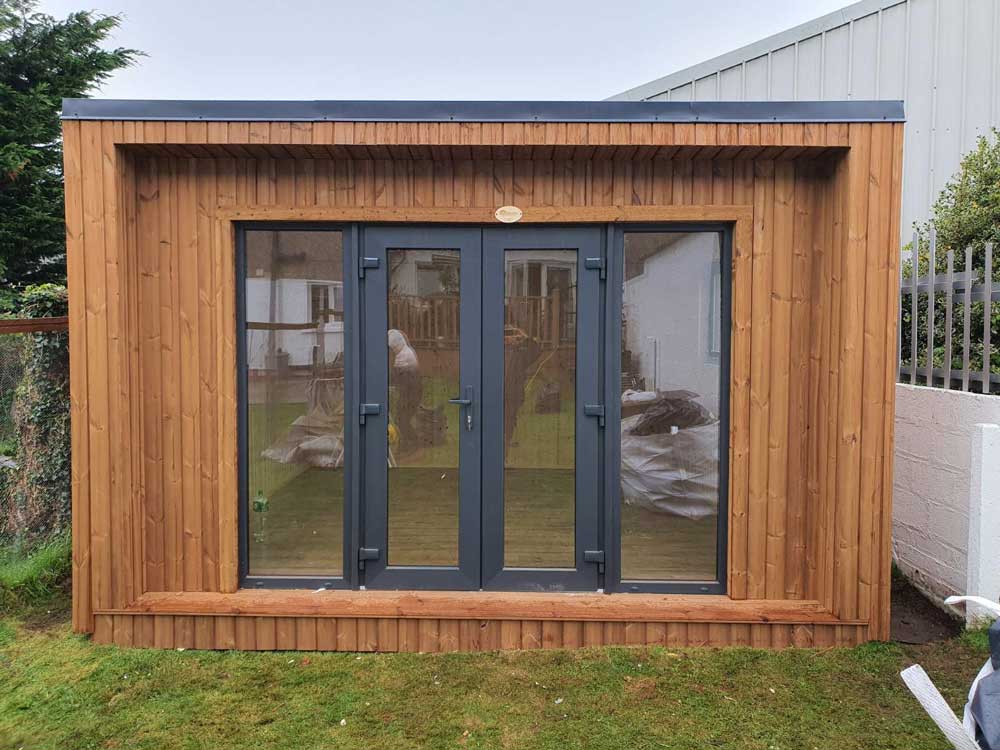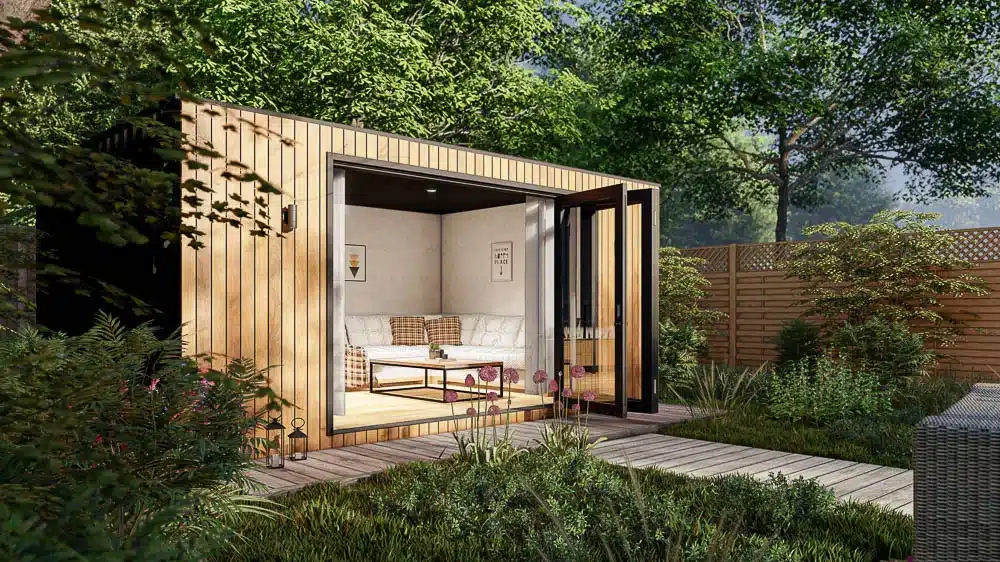In conservation areas, there are specific restrictions to maintain the look and feel of these areas. Here are the main factors to consider when planning permission is granted within conservation zones: General Restrictions
In conservation areas, planning permission is required for any building or extension that falls under allowed development. This includes garden buildings, sheds and outbuildings.
Size and Scale
The authority for planning may need permission for structures that are of any size, if their dimensions are deemed as detrimental to the conservation zone. Scale and size restrictions apply to new buildings and extensions, in comparison to non-designated areas.
The location within the property:
Extensions and structures which are located on the front or side of the property are more likely to require planning permission. Rear structures might be required to obtain permission if they are visible from public spaces or affect the general style of the neighborhood.
Materials and Design
Design and material selection is important in conservation areas. Material selection for any new building or extension needs to be compatible with the historical or architectural importance of the location. These requirements will require permission for planning.
Demolition:
Planning permission is generally required in conservation zones to ensure that the changes made are in keeping with an region's distinct characteristic.
Height Restrictions:
In conservation zones, the height restriction is higher. A structure over 2.5 meters high (especially within 2 metres of the boundary line) is likely to require approval from the planning department.
Effects on the Surroundings
If the proposed building or addition is likely to have an impact that is significant on the appearance of the conservation area, or its setting that includes views out and into the area, a planning permit will be required.
The building is used for:
If an outbuilding or garden meets the size restrictions, it may still require planning permission because of its intended purpose (e.g. as a studio, home office or habitable room).
Modifications and Additions
Planning permission is typically required for extensions that go beyond the specified size or volume limits or that alter the exterior appearance. This includes conservatories or other significant changes.
Curtilage Structures:
A conservation area requires planning permission for any structure within the curtilage. This includes any expansions, new outbuildings or any alterations.
Trees that are protected
Trees in conservation zones are typically protected. If your proposed construction will impact trees, you might need to obtain additional permits such as an authorization for tree work in addition to planning permission.
Local Authority Guidelines
Each conservation area could have specific guidelines and restrictions established by the local authority for planning. These guidelines can be adapted to meet the specific character and characteristics of each region.
Planning permission is required for conservation areas. This involves a thorough assessment of the impact that the extension, garden room, outhouse, conservatory or garden office could have on the historic and architectural characteristics of the area. To ensure that your plan is compliant with the relevant rules, it's essential to consult with your local authorities prior to beginning the design process. View the top rated garden rooms blog for site examples including garden rooms near me, outhouse building, do you need planning permission for a garden room, luxury outhouse, conservatories and garden rooms, best electric heater for cabin, how to lay decking on soil, outhouse for garden, garden outhouse, garden room planning permission and more.

What Is The Environmental Impact Of Gardens, Rooms, Etc.?
If you are planning to construct garden rooms, conservatories, outhouses, garden offices, or extensions, taking into account the environmental impact is crucial and may influence the need for planning permission. Here are a few of most significant environmental aspects you must consider: Biodiversity as well as wildlife and other natural resources.
Planning permission could be needed in the event that the proposed construction will impact local wildlife habitats such as trees, hedgerows or ponds. To evaluate and reduce the impacts of biodiversity, an ecological assessment may be necessary.
Protected Species and Habitats:
If the location is home to species that are protected (e.g. bats, bats or newts, etc.)) or is within or close to protected habitats (e.g., Sites of Special Scientific Interest : SSSI) Planning permission is vital. The site must be protected through special methods.
Tree Preservation Orders (TPOs):
If the proposed structure requires the removal or modification of trees protected by TPOs, a planning permit is required. The local authority must review the impact on the proposed structure and may require additional mitigation measures or a replacement plant.
Flood Risk and Water Management
Planning permission is required for developments near or in flood-prone zones. Assessments of flood risk (FRAs) are required at times to make sure the structure doesn't create flood risks and that it has sufficient drainage.
Sustainable Construction Practices
The planning permission is required to ensure the use of sustainable materials and construction practices. It is crucial to think about the energy efficiency of materials, their insulation, and the carbon footprint they leave.
Drainage and surface water runoff
Impact of new structures on drainage and surface runoff are key environmental factors. Planning permission ensures proper drainage systems to stop waterlogging and flooding have been put in place.
Stability of soil and soil
A permit for planning is required if the proposed construction may affect the stability of soil or the land. This includes issues like subsidence and soil erosion on sloped areas.
Air Quality
If a development is likely to have an impact on the local air quality (such for example, near major roads or industrial areas) Planning permission will be required. This is to ensure that the levels of air pollution stay within acceptable limits. Additionally, mitigation measures are to be put into place.
Noise Pollution:
If the proposed use of the garden room or extension is likely to generate significant noise (e.g., a workshop or music studio) Planning permission is required. The local authority evaluates the level of noise and potential impacts on the environment and neighbors.
Waste Management:
A well-organized waste management system in both construction and after, is essential. Planning permission ensures adequate provisions for recycling and waste management to limit the environmental impact.
Energy Efficiency
Planning permission may include conditions for energy efficient technologies including solar panels, for example. high-performance glass. This helps reduce the environmental footprint.
Environmental Regulations Compliance:
Environmental regulations like the UK Environmental Protection Act must be adhered to in all developments. Planning approval assures that all regulations are met, in addition to the development being sustainable for the environment.
In the end, planning permission for garden rooms, conservatories outhouses, gardens offices or extensions should take into account a wide range of environmental impacts. In order to ensure that the development planned is sustainable It is crucial to seek out local authorities for planning as early in the planning stage as you can. See the most popular kitchen garden room extension for blog examples including luxury outhouse, herts garden rooms, do you need planning permission for a garden room, copyright outbuildings, do you need planning permission for a garden room, garden rooms, garden room planning permission, copyright outhouse, garden out house, what is a garden room and more.

What Planning Permits Are Required For Gardens, Rooms, Etc. With Regard To Utilities And Infrastructure
If you're contemplating building a garden room, conservatory or outhouses (garden offices), or an extension, utility and infrastructure considerations will be essential. This can impact the necessity for a planning permit. Below are some important aspects to take into consideration the water supply and drainage
If the new structure requires connection to water supply or drainage systems, planning approval could be required. Local water authorities could need to evaluate the impact of the construction on water supply or sewage systems.
Electricity and Gas Connections:
Planning permission might be needed when the building is to be connected to gas or electricity. In these cases, it is important to be in compliance with construction codes and safety standards.
Utility Easements
Planning permission may be required if the construction is located in an area that is designated for utilities and infrastructure. Local utility providers may have to approve any development that takes place within these zones.
Septic tanks and Sewage Systems
If the building is going to require a septic system, or an on-site treatment facility for sewerage, a planning permit will be required. The systems must be in compliance with the environmental and health standards.
Drainage and Surface Water Management:
Planning permission is required for the draining of runoff and surface water from a brand new structure. To prevent flooding and erosion, as well as water pollution, it could be required to implement certain measures.
Access to Utilities for Construction
Planning permission might be needed in the event that temporary utilities are needed (such as water to build). The temporary connection has to meet safety and environmental standards.
Impact on local infrastructure
It is crucial to obtain permission to plan in order to determine what impact the construction will have on local infrastructure. This comprises utilities, roads and other services that are public. The local authority must determine whether the infrastructure is able to support the development.
Waste Management:
Planning permissions may include requirements regarding waste management and recycling throughout and after construction. To limit the environmental impact, it is important to have adequate provisions for recycling and disposal.
Efficiency in Energy Efficiency:
Installation of energy-efficient components or systems for renewable energy, such as solar panels and heat pumps in new buildings may require approval from the planning department. Conformity with building regulations and environmental standards is crucial.
Telecommunications, Internet and Connectivity
Planning permission could be required if the new structure needs internet connectivity and telecommunications. In accordance with guidelines and standards for telecommunications infrastructure.
Accessible via Roads and Footpaths
The creation or modification of access roads or pedestrian routes for a new building may require approval from the planning department. For road and path construction it is crucial to adhere to safety guidelines.
Public Transport Accessibility
Planning permission might be needed if the new structure has any impact on public transport (such as stops for buses or train stations). Conformity with the regulations and standards for public transport infrastructure is essential.
In the end the importance of infrastructure and utilities are crucial in determining whether planning permission is required for conservatories, garden rooms outhouses, garden offices, or extensions. To ensure that all rules and standards are followed it is crucial to consult the local planning authority at an early stage in the planning process. Take a look at the most popular what are the planning regulations for garden rooms? for more recommendations including copyright garden office, outhouse garden rooms, garden outhouse, 4m x 4m garden room, how to get power to a garden room, best electric heater for cabin, garden rooms in St Albans, my outhouse, outhouse builders, how to get power to a garden room and more.
